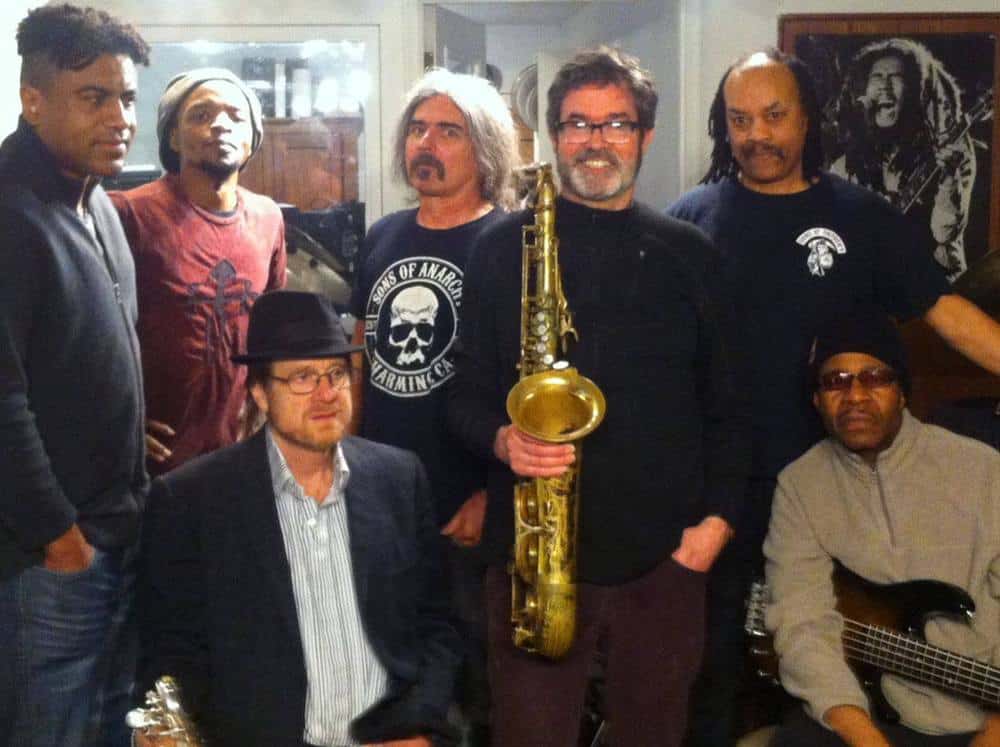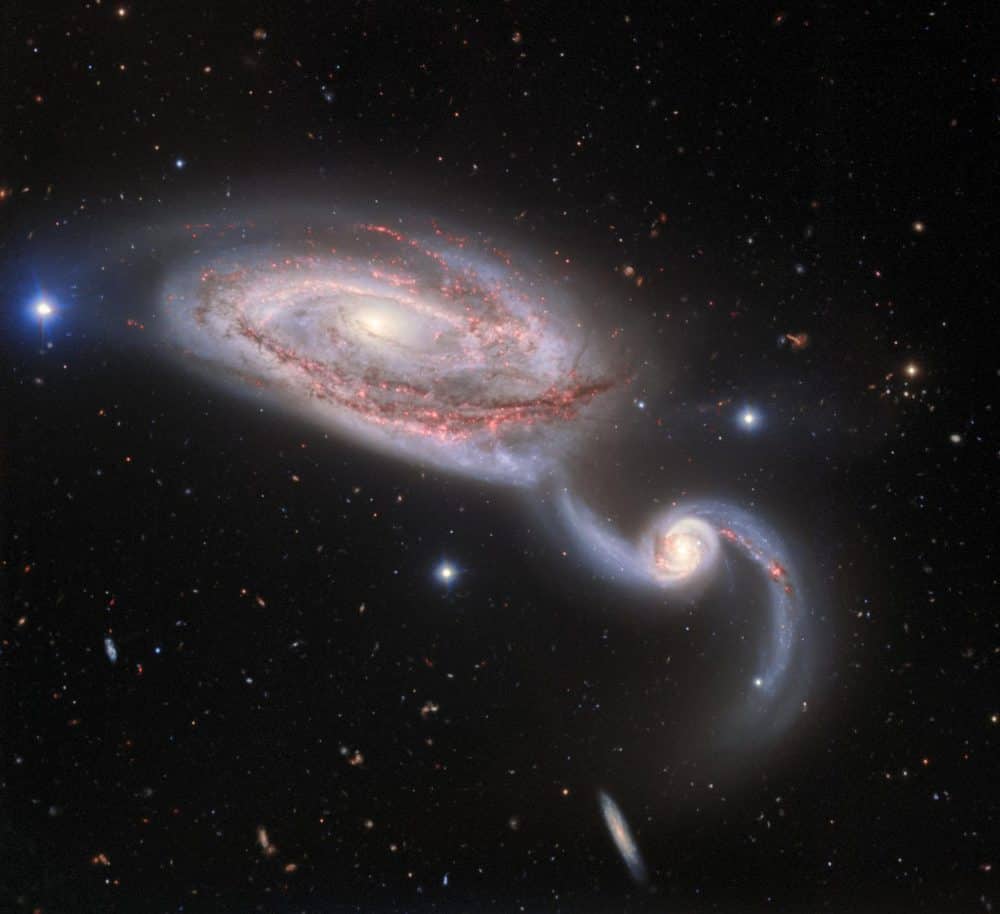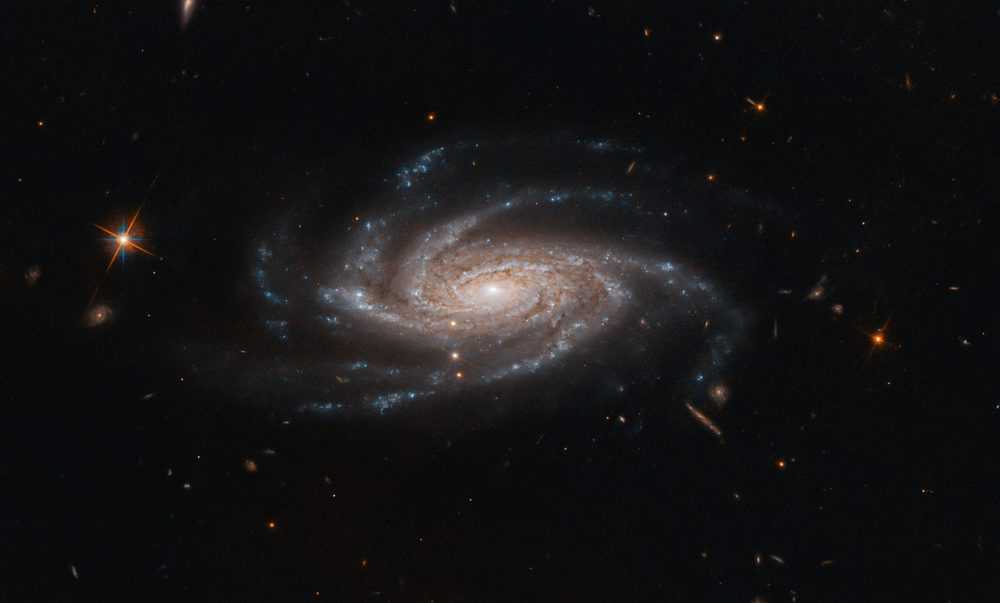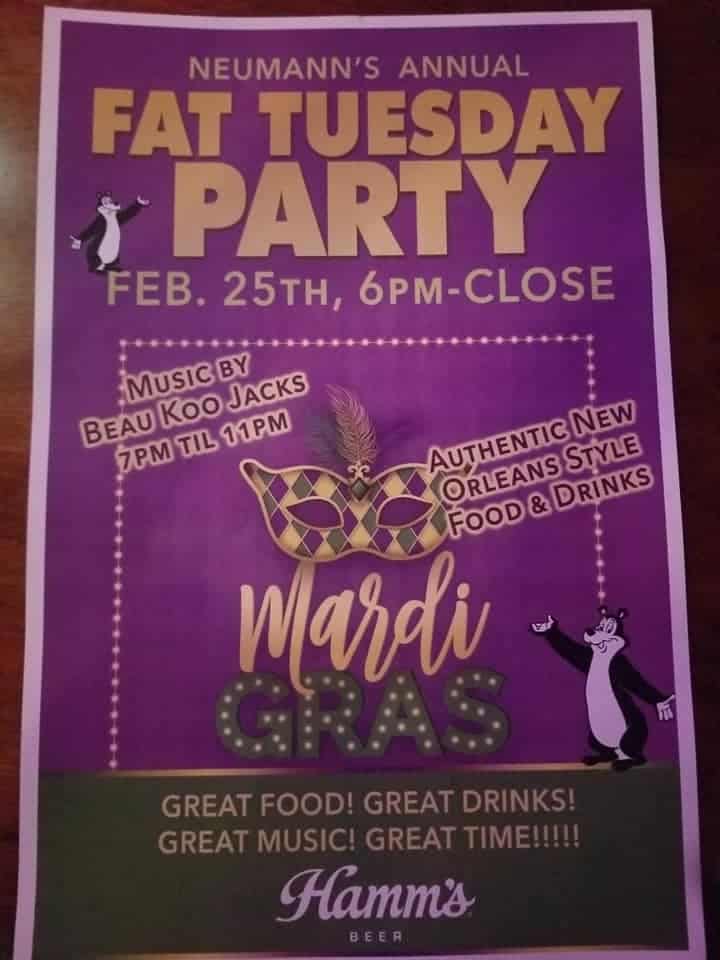Blog
February 26, 2020
Substitute teaching this week at Friends School, teaching Percussion & Guitar classes. Mounting material for upcoming performance.
(For a complete listing of Daily Music go to Blog pages at micklabriola.com)
https://www.youtube.com/watch?v=CfudHcyILSs
more...NASA/ESA Hubble Space Telescope image capturing UGC 477, a low surface brightness galaxy located just over 110 million light-years away in the constellation of Pisces (The Fish). Credit: ESA/Hubble & NASA, Judy Schmidt
A study by Scuola Internazionale Superiore di Studi Avanzati (SISSA) provides important information on its composition and on its interaction with luminous matter.
They are called low-surface-brightness galaxies and it is thanks to them that important confirmations and new information have been obtained on one of the largest mysteries of the cosmos: dark matter. “We have found that disc galaxies can be represented by a universal relationship. In particular, in this study we analyzed the so-called Low-Surface-Brightness (LSB) galaxies, a particular type of galaxy with a rotating disc called this way because they have a low-density brightness “says Chiara di Paolo, astrophysicist at SISSA and lead author of a study recently published in MNRAS together with Paolo Salucci (astrophysicist at SISSA) and Erkurt Adnan (Istanbul University).
The researchers analyzed the speed at which the stars and gases that compose the galaxies subject matter of the study rotate, noting that the LSBs also have a very homogenous behavior. This result consolidates several clues on the presence and behavior of dark matter, opening up new scenarios on its interactions with bright matter.

John R. Cash (born J. R. Cash; February 26, 1932 – September 12, 2003) was an American singer, songwriter, musician, actor, and author. He is one of the best-selling music artists of all time, having sold more than 90 million records worldwide. His genre-spanning songs and sound embraced country, rock and roll, rockabilly, blues, folk, and gospel. This crossover appeal won Cash the rare honor of being inducted into the Country Music, Rock and Roll, and Gospel Music Halls of Fame.
Born in Arkansas to poor cotton farmers, Cash rose to fame in the prominent country music scene in Memphis, Tennessee, after four years in the United States Air Force. Cash was known for his deep, calm bass-baritone voice, the distinctive sound of his Tennessee Three backing band characterized by train-like chugging guitar rhythms, a rebelliousness coupled with an increasingly somber and humble demeanor, free prison concerts, and a trademark, all-black stage wardrobe, which earned him the nickname “The Man in Black”. He traditionally began his concerts by simply introducing himself, “Hello, I’m Johnny Cash,” followed by his signature song “Folsom Prison Blues“.
Much of Cash’s music contained themes of sorrow, moral tribulation, and redemption, especially in the later stages of his career. His other signature songs include “I Walk the Line“, “Ring of Fire“, “Get Rhythm“, and “Man in Black“. He also recorded humorous numbers like “One Piece at a Time” and “A Boy Named Sue“; a duet with his future wife, June Carter, called “Jackson” (followed by many further duets after their wedding); and railroad songs including “Hey, Porter“, “Orange Blossom Special“, and “Rock Island Line“. During the last stage of his career, Cash coveredsongs by several late-20th-century rock artists, notably “Hurt” by Nine Inch Nails, “Rusty Cage” by Soundgarden and “Rowboat” by Beck.
more...Antoine “Fats” Domino Jr. (February 26, 1928 – October 24, 2017) was an American pianist and singer-songwriter. One of the pioneers of rock and roll music, Domino sold more than 65 million records. Between 1955 and 1960, he had eleven Top 10 hits. His humility and shyness may be one reason his contribution to the genre has been overlooked.
During his career, Domino had 35 records in the U.S. Billboard Top 40, and five of his pre-1955 records sold more than a million copies, being certified gold. His musical style was based on traditional rhythm and blues, accompanied by saxophones, bass, piano, electric guitar, and drums.
His 1949 release “The Fat Man” is widely regarded as the first million-selling rock and roll record. His two most famous songs are “Ain’t That A Shame” and “Blueberry Hill“.
Antoine Domino Jr. was born and raised in New Orleans, Louisiana, the youngest of eight children born to Antoine Caliste Domino (1879–1964) and Marie-Donatille Gros (1886–1971). The Domino family was of French Creole background, and Louisiana Creole was his first language.
Antoine was born at home with the assistance of his grandmother, a midwife. His name was initially misspelled as Anthony on his birth certificate.His family had recently arrived in the Lower Ninth Ward from Vacherie, Louisiana. His father was a part-time violin player who worked at a racetrack.
more...David Pell (February 26, 1925 – May 7, 2017) was an American jazz saxophonist, bandleader and record producer. He was best known for leading a cool jazz octet in the 1950s.
Pell played in his teens with the big bands of Tony Pastor, Bob Astor, and Bobby Sherwood. In the 1940s he moved to California, where he played on Bob Crosby‘s radio show in 1946 and became a member of Les Brown‘s band from 1947 to 1955.
In 1953, he began working with his own ensembles, mostly as an octet with Pell on tenor saxophone, another saxophone (either a baritone or an alto), trumpet, trombone, guitar, and a piano-bass-drums rhythm section). Among the octet players were Pepper Adams, Benny Carter, Mel Lewis, Red Mitchell, Marty Paich, Art Pepper and, early his career, John Williams. These ensembles recorded in the 1950s for Atlantic, Kapp, Coral, Capitol, and RCA Victor. Pell also worked as a sideman for Shorty Rogers, Pete Rugolo, Benny Goodman, and Gene Krupa. He produced music in the 1950s and 1960s for Tops, Uni and Liberty; among his credits were singles by Gary Lewis & the Playboys.
https://www.youtube.com/watch?v=Rqj6-fm7xdw
more...February 25, 2020 Mardi Gras Day
Substitute teaching this week at Friends School, teaching Percussion & Guitar classes. Mounting material for upcoming performance.
Neumanns Bar
2531 7th Ave E, North St Paul, MN 55109 (651) 770-6020
Bring your Mardi Gras beads and your Gris Gris pouch.
With Jamie Carter, Todd Matheson, Larry McCabe, Paul Strickland, Jesse Mueller, Torrion Amie, Art Haynes and mick wazoo!

Image of the interacting galaxy pair NGC 5394/5 obtained with NSF’s National Optical-Infrared Astronomy Research Laboratory’s Gemini North 8-meter telescope on Hawai’i’s Maunakea using the Gemini Multi-Object Spectrograph in imaging mode. Credit: NSF’s National Optical-Infrared Astronomy Research Laboratory/Gemini Observatory/AURA.
NGC 5395 is an interacting spiral galaxy located at a distance of 160 million light years, but receding away from the earth at 3511 kilometers (2181.6 miles) per second, in the constellation Canes Venatici. It was discovered by William Herschel on May 16, 1787. NGC 5395 and NGC 5394 are included in the Atlas of Peculiar Galaxies as Arp 84 in the category “Spiral galaxies with large high surface brightness companions”.
NGC 5395 is the larger spiral galaxy interacting with smaller barred spiral galaxy, NGC 5394. NGC 5395 is nearly face-on, with a diameter of around 140,000 light-years across. NGC 5395 has a bright central region and is distorted due to the interaction with NGC 5394. The larger of the two rings around the galaxy forms a ring off the center of the galaxy. Dust lanes can be seen throughout the galaxy.
NGC 5394 is the smaller barred spiral galaxy interacting with larger spiral galaxy, NGC 5395. NGC 5394 has an oval disk, with a diameter of around 90 thousand light years across. It is also located at a distance of 160 million light-years across but receding away from the earth at a distance of 3448 kilometers (2142.4 miles) per second. Most of the gas is concentrated at the center of the galaxy, however, two out of the three spiral arms show no sign of ongoing star formation.

more...
George Harrison MBE (25 February 1943 – 29 November 2001) was an English musician, singer-songwriter, and music and film producer who achieved international fame as the lead guitarist of the Beatles. Sometimes called “the quiet Beatle”, Harrison embraced Indian culture and helped broaden the scope of popular music through his incorporation of Indian instrumentation and Hindu-aligned spirituality in the Beatles’ work. Although the majority of the band’s songs were written by John Lennon and Paul McCartney, most Beatles albums from 1965 onwards contained at least two Harrison compositions. His songs for the group included “Taxman“, “Within You Without You“, “While My Guitar Gently Weeps“, “Here Comes the Sun” and “Something“.
Harrison’s earliest musical influences included George Formby and Django Reinhardt; Carl Perkins, Chet Atkins and Chuck Berry were subsequent influences. By 1965, he had begun to lead the Beatles into folk rock through his interest in Bob Dylan and the Byrds, and towards Indian classical music through his use of the sitar on “Norwegian Wood (This Bird Has Flown)“. Having initiated the band’s embracing of Transcendental Meditation in 1967, he subsequently developed an association with the Hare Krishna movement. After the band’s break-up in 1970, Harrison released the triple album All Things Must Pass, a critically acclaimed work that produced his most successful hit single, “My Sweet Lord“, and introduced his signature sound as a solo artist, the slide guitar. He also organised the 1971 Concert for Bangladesh with Indian musician Ravi Shankar, a precursor to later benefit concerts such as Live Aid. In his role as a music and film producer, Harrison produced acts signed to the Beatles’ Apple record label before founding Dark Horse Records in 1974 and co-founding HandMade Films in 1978.
Harrison released several best-selling singles and albums as a solo performer. In 1988, he co-founded the platinum-selling supergroup the Traveling Wilburys. A prolific recording artist, he was featured as a guest guitarist on tracks by Badfinger, Ronnie Wood and Billy Preston, and collaborated on songs and music with Dylan, Eric Clapton, Ringo Starr and Tom Petty, among others. Rolling Stone magazine ranked him number 11 in their list of the “100 Greatest Guitarists of All Time”. He is a two-time Rock and Roll Hall of Fame inductee – as a member of the Beatles in 1988, and posthumously for his solo career in 2004.
Harrison’s first marriage, to model Pattie Boyd in 1966, ended in divorce in 1977. The following year he married Olivia Arias, with whom he had a son, Dhani. Harrison died from lung cancer in 2001 at the age of 58, two years after surviving a knife attack by an intruder at his Friar Park home. His remains were cremated and the ashes were scattered according to Hindu tradition in a private ceremony in the Ganges and Yamuna rivers in India. He left an estate of almost £100 million.
more...Hal Blaine (born Harold Simon Belsky; February 5, 1929 – March 11, 2019) was an American drummer and session musician, estimated to be among the most recorded studio drummers in the history of the music industry, claiming over 35,000 sessions and 6,000 singles. His drumming is featured on 150 US top 10 hits, 40 of which went to number one, as well as many film and television soundtracks.
Born in Holyoke, Massachusetts, Blaine moved with his family to California in 1943 and subsequently began playing jazz and big band music before taking up rock and roll session work. He became one of the regular players in Phil Spector‘s de facto house band, which Blaine nicknamed “the Wrecking Crew“. Some of the records Blaine played on include the Ronettes‘ single “Be My Baby” (1963), which contained a drum beat that became widely imitated, as well as works by popular artists such as Frank Sinatra, Elvis Presley, the Beach Boys, Simon & Garfunkel, Neil Diamond, and the Byrds.
Blaine’s workload declined from the 1980s onwards as recording and musical practices changed. In 2000, he was among the inaugural “sidemen” inductees to the Rock and Roll Hall of Fame, and in 2018 he received a Grammy Lifetime Achievement Award.
Blaine was born Harold Simon Belsky to Jewish Eastern European immigrants, Meyer and Rose Belsky (née Silverman), in Holyoke, Massachusetts, United States. When he was seven, he moved with his family to Hartford, Connecticut. He began playing drums at the age of eight, and again moved with his family to California in 1943.
more...René Thomas (25 February 1927 – 3 January 1975) was a jazz guitarist from Belgium.
In the early 1950s, he moved to Paris and became part of the modern jazz scene, playing in the style of Jimmy Raney. Back in Europe in 1962, he toured and recorded with Chet Baker, Bobby Jaspar, Kenny Clarke, Eddy Louiss, Stan Getz, Lucky Thompson, Sonny Criss, Jacques Pelzer, Lou Bennett, Charles “Lolo” Bellonzi, and Ingfried Hoffmann.
Thomas died of a heart attack in Santander, Spain at the age of 47 on 3 January 1975.
https://www.youtube.com/watch?v=GA4Iz3YA6fI
more...Ralph Edmund Stanley (February 25, 1927 – June 23, 2016) was an American bluegrass artist, known for his distinctive singing and banjo playing. Stanley began playing music in 1946, originally with his older brother Carter Stanley as part of The Stanley Brothers, and most often as the leader of his band, The Clinch Mountain Boys. He was also known as Dr. Ralph Stanley.
He was part of the first generation of bluegrass musicians and was inducted into both the International Bluegrass Music Hall of Honor and the Grand Ole Opry.
Stanley was born, grew up, and lived in rural Southwest Virginia—”in a little town called McClure at a place called Big Spraddle, just up the holler” from where he moved in 1936 and lived ever since in Dickenson County. The son of Lee and Lucy Stanley, Ralph did not grow up around a lot of music in his home. As he says, his “daddy didn’t play an instrument, but sometimes he would sing church music. And I’d hear him sing songs like ‘Man of Constant Sorrow,’ ‘Pretty Polly‘ and ‘Omie Wise.
more...Substitute teaching this week at Friends School, teaching Percussion & Guitar classes.
more...The spiral galaxy NGC 2008 sits center stage, its ghostly spiral arms spreading out towards us, in this image captured by the NASA/ESA Hubble Space Telescope.
This galaxy is located about 425 million light-years from Earth in the constellation of Pictor (The Painter’s Easel). Discovered in 1834 by astronomer John Herschel, NGC 2008 is categorized as a type Sc galaxy in the Hubble sequence, a system used to describe and classify the various morphologies of galaxies. The “S” indicates that NGC 2008 is a spiral, while the “c” means it has a relatively small central bulge and more open spiral arms. Spiral galaxies with larger central bulges tend to have more tightly wrapped arms, and are classified as Sa galaxies, while those in between are classified as type Sb.
Spiral galaxies are ubiquitous across the cosmos, comprising over 70% of all observed galaxies — including our own, the Milky Way. However, their ubiquity does not detract from their beauty. These grand, spiraling collections of billions of stars are among the most wondrous sights that have been captured by telescopes such as Hubble, and are firmly embedded in astronomical iconography.
A spiral galaxy is shaped like a disk. The disk tends to resemble a pinwheel with arms that spiral outward as it rotates. Spiral galaxies tend to contain more middle-aged stars along with clouds of gas and dust.

icholas Christian Hopkins (24 February 1944 – 6 September 1994) was an English pianist and organist. Hopkins recorded and performed on many notable British and American pop and rock music releases from the 1960s through the 1990s including many songs by The Rolling Stones, The Kinks and The Who.
Nicholas Christian Hopkins was born in Perivale, Middlesex, England, on 24 February 1944. He began playing the piano at the age of three. He attended Sudbury Primary School in Perrin Road and Wembley County Grammar School, which now forms part of Alperton Community School, and was initially tutored by a local piano teacher; in his teens he won a scholarship to the Royal Academy of Music in London. He suffered from Crohn’s disease for most of his life.
His poor health and repeated surgery later made it difficult for him to tour, and he worked mainly as a session musician for most of his career.Hopkins’ studies were interrupted in 1960 when he left school at 16 to become the pianist with Screaming Lord Sutch‘s Savages until, two years later, he and fellow Savages Bernie Watson, Rick Brown (aka Ricky Fenson) and Carlo Little joined the renowned blues harmonica player Cyril Davies, who had just left Blues Incorporated, and became the Cyril Davies (R&B) All-Stars. Hopkins played piano on their first single, Davies’ much-admired theme tune “Country Line Special”. However he was forced to leave the All Stars in May 1963 for a series of operations that almost cost him his life and he was bed-ridden for 19 months in his late teenage years. During Hopkins’ convalescence Davies died of leukemia and the All Stars disbanded. Hopkins’ frail health led him to concentrate on working as a session musician instead of joining bands, although he left his mark performing with a wide variety of famous bands. He quickly became one of London’s most in-demand session pianists and performed on many hit recordings from this period.
more...David “Fathead” Newman (February 24, 1933 – January 20, 2009) was an American jazz and rhythm-and-blues saxophonist who made numerous recordings as a session musician and leader, but is best known for his work as a sideman on seminal 1950s and early 1960s recordings by singer-pianist Ray Charles.
The AllMusic Guide to Jazz wrote that “there have not been many saxophonists and flutists more naturally soulful than David “Fathead” Newman,” and that “one of jazz’s and popular music’s great pleasures is to hear, during a vocalist’s break, the gorgeous, huge Newman tones filling the space…” Newman is sometimes cited as a leading exponent of the so-called “Texas Tenor” saxophone style, which refers to the many big-toned, bluesy jazz tenor players from that state.
Newman was born in Corsicana, Texas, on February 24, 1933, but grew up in Dallas, where he studied first the piano and then the saxophone. According to one account, he got his nickname “Fathead” in school when “an outraged music instructor used it as an epithet after catching Mr. Newman playing a Sousa march from memory rather than from reading the sheet music, which rested upside down on the stand.”
Inspired by the jump blues bandleader Louis Jordan, Newman took up the alto saxophone in the seventh grade, and was mentored by former Count Basie saxophonist Buster Smith. He went off to Jarvis Christian College on a music and theology scholarship but quit school after three years and began playing professionally, mostly jazz and blues, with a number of musicians, including Smith, pianist Lloyd Glenn, and guitarist bandleaders Lowell Fulson and T-Bone Walker.
more...More Posts
- The Cosmos with NGC 5879
- Eberhard Weber Day
- Sam Cooke Day
- J. J. Johnson Day
- World Music with Jabali Afrika
- Daily Roots with Derrick Morgan
- Echos of Freedom by Dr Martin Luther King Jr
- The Cosmos with IC 4605
- Richie Havens Day
- Steve Gilmore Day
- Snooks Eaglin Day
- Lola Flores Day
- World Music with Franco Luambo Makiadi
- Daily Roots with Karl Bryan & Overproof
- Echos of Freedom by Nelson Mandela
- The Cosmos with the Super Blood Wolf Moon
- Andy Sheppard Day
- Jimmy Cobb Day
- Leadbelly Day
- World Music with Carlos Núñez
